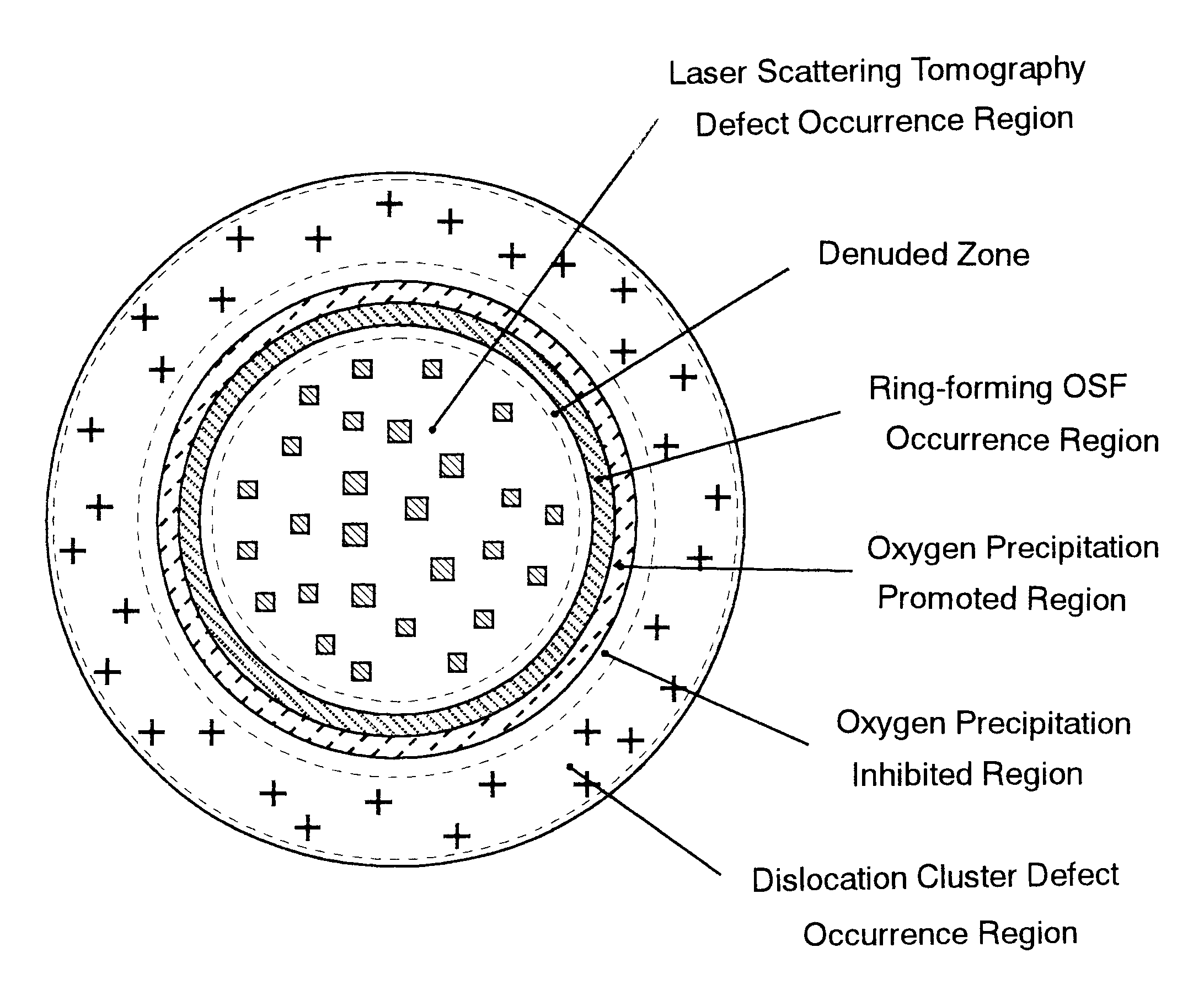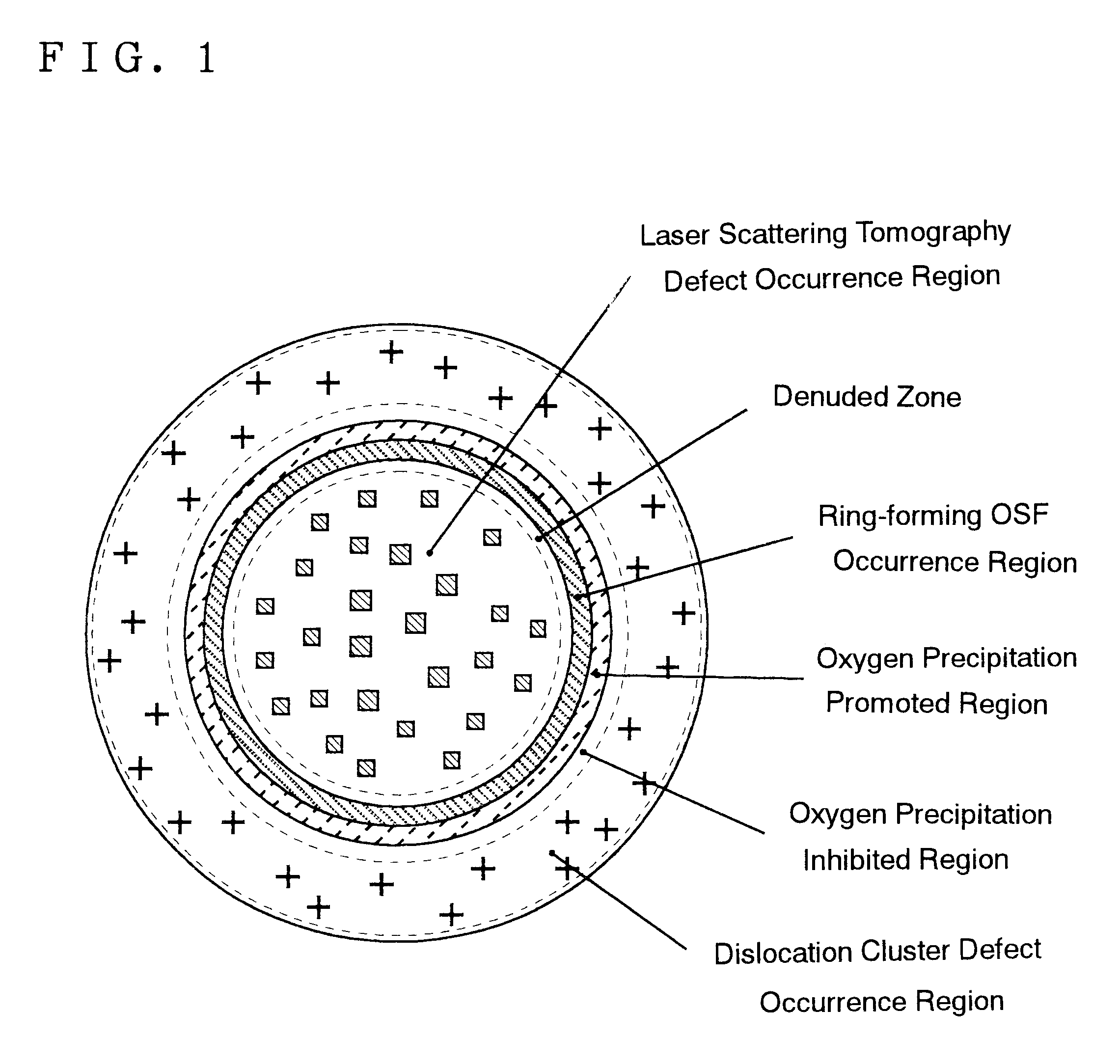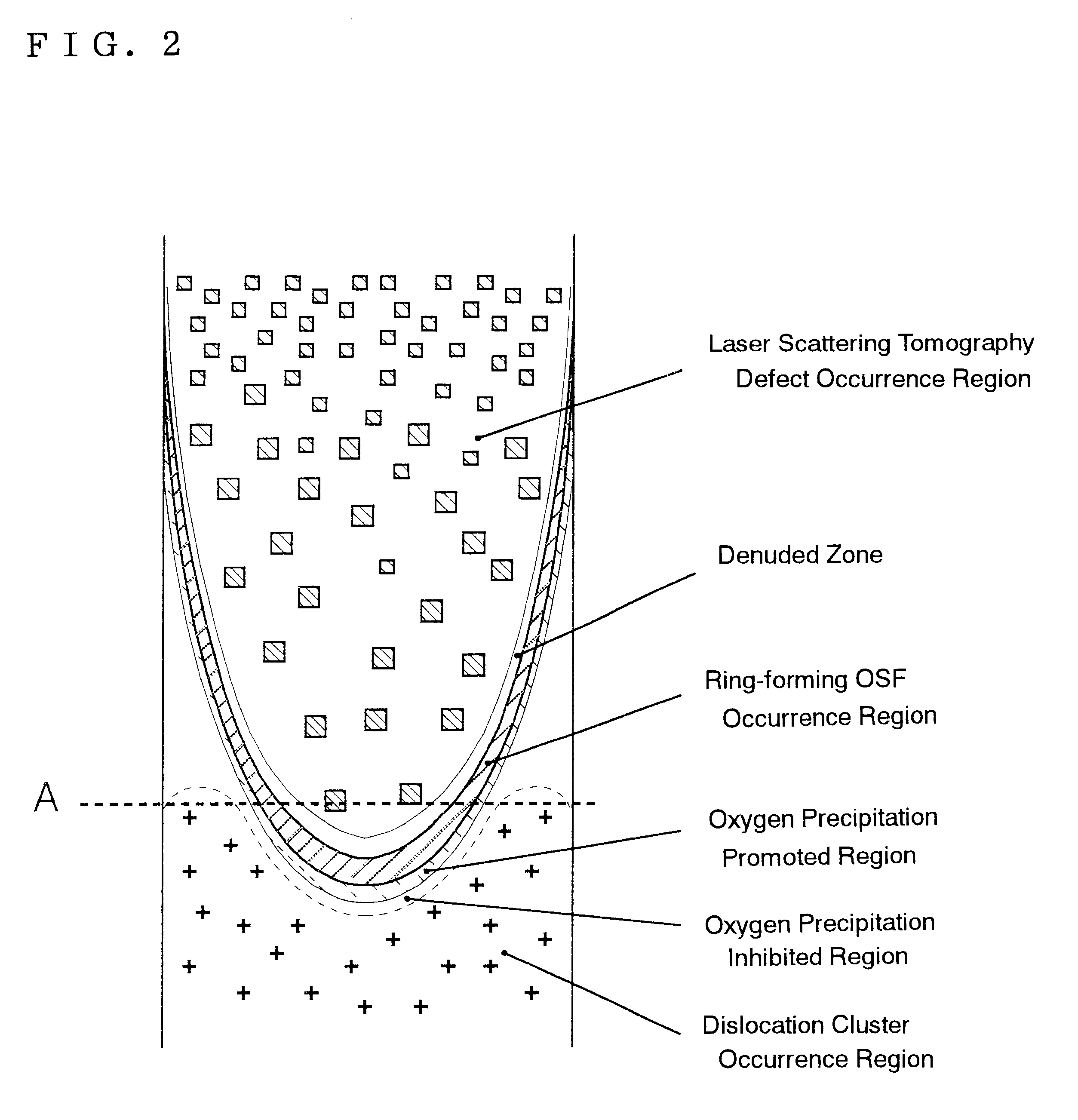Silicon wafer and epitaxial silicon wafer utilizing same
a technology of epitaxial silicon and silicon wafer, which is applied in the direction of after-treatment details, transportation and packaging, and compounds of silicon, etc., can solve the problems of affecting reducing the performance characteristics of devices, and producing problems
- Summary
- Abstract
- Description
- Claims
- Application Information
AI Technical Summary
Problems solved by technology
Method used
Image
Examples
example 1
Using an apparatus whose sectional structure was as schematically shown in FIG. 5, experiments were made to grow single crystals with an intended diameter of 210 mm and a body length of 1,000 mm. In this figure, the heat shield 7 had a structure such that the outer shell was made of graphite and the inside was filled with graphite felt. The outer diameter of the portion inserted in the crucible was 480 mm, the smallest diameter S at the lower end was 270 mm, the width W in the radial direction was 105 mm, and the inner surface had the shape of an inverse truncated cone beginning with the lower end, with an inclination of 21.degree. against the vertical direction. The crucible 1 used had an inside diameter of 550 mm, the height H of the heat shield 7 from the melt surface at the lower end was 60 mm.
The crucible was charged with 120 kg of high purity polycrystalline silicon, and the p-type dopant boron was added so that the single crystal might have an electric resistance of about 10 ...
example 2
Using the same wafer X as described above in Example 1, a wafer with oxide precipitates formed therein was prepared by 2 hours of heating at 780.degree. C. in a nitrogen gas atmosphere containing 30% of oxygen, followed by 8 hours of heat treatment at 1,000.degree. C. The cleavage surface of this wafer was observed and oxide precipitates, which are BMDs, were observed at a density of 1.1.times.10.sup.5 / cm.sup.2. This wafer was examined for surface grown-in defects, time-zero dielectric breakdown, gettering capability and, further, characteristics of devices formed and conforming product percentage and so forth. As a result, it was confirmed that it was superior to the conventional wafers.
example 3
The same wafer X according to the invention as shown in Example 1 and the same prior art wafer C for comparison were used and subjected to 1 hour of heating treatment at 1,200.degree. C. in a high-purity hydrogen gas atmosphere at a temperature increasing or decreasing rate of 3.degree. C. / min. After subjecting the treated wafers to SC-1 washing (washing with a mixed solution composed of aqueous ammonia, aqueous solution of hydrogen peroxide and ultrapure water=1:1:15), they were measured for the density of defects having a size not smaller than 0.8 .mu.m using a surface testing apparatus (KLA-Tencor model SP-1). After surface observation, the 1-.mu.m-thick wafer surface layer was polished off using a mirror polishing machine and, after SC-1 washing, the new surface was examined for the defects mentioned above. This procedure was repeated and the thickness of the denuded layer formed on the surface was measured.
As a result, the wafer C was found to have a 2- to 3-.mu.m-thick denuded...
PUM
| Property | Measurement | Unit |
|---|---|---|
| mean size | aaaaa | aaaaa |
| size | aaaaa | aaaaa |
| melting point | aaaaa | aaaaa |
Abstract
Description
Claims
Application Information
 Login to View More
Login to View More - R&D
- Intellectual Property
- Life Sciences
- Materials
- Tech Scout
- Unparalleled Data Quality
- Higher Quality Content
- 60% Fewer Hallucinations
Browse by: Latest US Patents, China's latest patents, Technical Efficacy Thesaurus, Application Domain, Technology Topic, Popular Technical Reports.
© 2025 PatSnap. All rights reserved.Legal|Privacy policy|Modern Slavery Act Transparency Statement|Sitemap|About US| Contact US: help@patsnap.com



